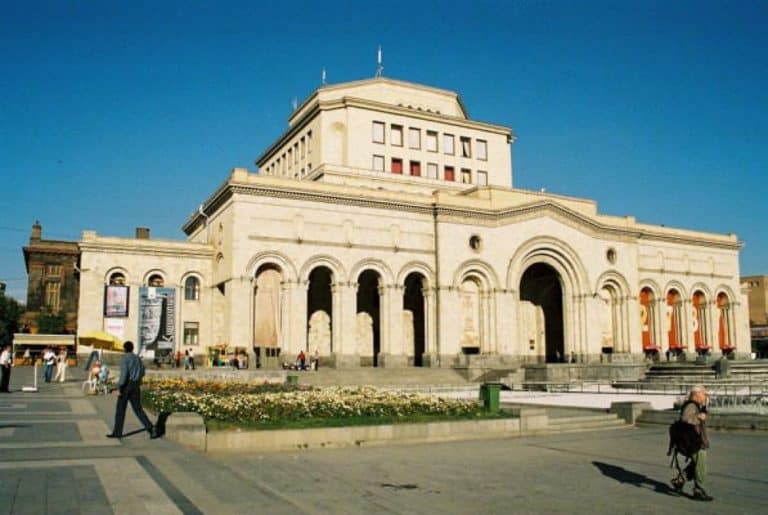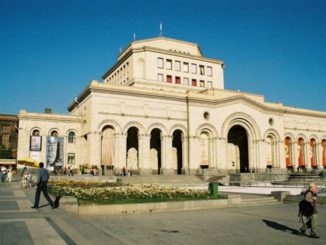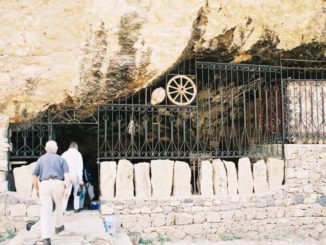Armenia
The Republic of Armenia is located in the mountain chain of the South Caucasus and is bordered to the south by Iran and the autonomous region of Nakhchivan and to the east by Azerbaijan and the Republic of Nagorno Karabakh.
To the north, it is bordered by Georgia and to the west, by Turkey.
Armenia is land-locked with no direct access to the sea.
The population of Armenia is: 3,017,000 inhabitants
The spoken language is Armenian but a knowledge of Russian is also quite common.
Time difference: 4 hours ahead of GMT
Electric current: Voltage 220 V on a frequency of 50 Hz
Type C and Type F electrical sockets
Telephone dialling code: +374
Car registration identity: ARM
The local currency is the Dram.
The country is spread out over three plateaux ranging from 1500 to 1800 metres altitude, valleys and mountain peaks such as Mount Aragats which rises 4,090 metres above sea level.
Armenia covers a surface area of some 29,743 square kilometres.
Armenia has several large fresh water lakes.
The largest of these in the country is Lake Sevan which lies at around 1,900 metres above sea level.
The lake’s surface area covers approximately 1,276 square kilometres, depending on the time of year as the water levels do drop during the summer season.
The country’s longest river is the Aras which stretches for 1,072 kilometres, only 192km of which are within Armenian territory.
The second largest river is the Akhurian with a length of 186km and this is a tributary of the Aras and delineates the border with Turkey for several kilometres.
Given the geographical position of Armenia, with the mountains that protect it from the winds coming in off the sea, the climate is typical of Eurasia with harsh long winters and short very hot summers.
The lack of rain means that the vegetation is typical of the steppes.
Despite there not being any active volcanoes in the country, Armenia is subject to tectonic movement, evidenced by the terrible earthquake which occurred in 1988 that destroyed the country’s second largest city, Gyumri, and resulted in the death of at least 25,000 people.
Between 800 BC and 600 BC, the first Armenian empire came to prominence in this part of the Eastern Caucasus and eastern Asia Minor.
Under the leadership of Tigranes II of Armenia in the first century BC., the kingdom stretched as far as the Mediterranean in one direction and to the Black Sea and the Caspian Sea in another.
In the 66th century BC, at the orders of Pompey, the Romans proceeded to conquer these Armenian territories.
For several centuries afterwards, a variety of claimants fought each other for possession of these lands: The Romans, the Parthians and then the Byzantines and Sassanids, the Arabs, the Mongols and the Persians.
It was only between 884 and 1045 that Armenia was able to attain some level of independence and at this time, the country enjoyed a very prosperous period both from a cultural and from an economic point of view. It was in this period that the new capital, Ani, was founded which is now located in Turkish territory.
From the end of the 11th century until the end of the 20th century, there were a succession of wars with and invasions by the Turks, the Arabs and finally, the Russians.
Throughout this period of unrest, the Armenian population was frequently forced to flee and to settle elsewhere.
They were the victims of several all-out massacres by the Turks.
In 1991, as a result of the internal strife within the former Soviet Union, Armenia managed to finally obtain her independence from the USSR.
The capital city of Armenia is Erevan, or Yerevan and is considered to be one of the main cultural, scientific and industrial centres of the Caucasus with everything on offer that you would expect from a large modern city from trendy clubs and theatres to museums, universities and much more.
An interesting visit that we would recommend is to the Matenadaran Institute where you can see ancient manuscripts in Armenian, Persian, Assyrian, Hebrew, Greek and Latin.
We also recommend that you do not miss out on a visit to the areas surrounding the capital as, within just a few kilometres, you will find some really fabulous historical sites.
| Garni | Geghard Monastery | Karahunj | Khor Virap | Lake Sevan | Noravank | Selim Pass | Tatev | Yerevan |
Shopping on the last day
[ Autumn, 2005 ] We spent some time and money on the last day in Armenia. First, I bought two bottles of Armenian cognac. They were not the famous ‘Ararat’, but something else which was…
Cave restaurant
[ Autumn, 2005 ] After visiting Noravank monastery in Armenia, we went to a restaurant in a cave in this gorge. It was too simple to call a restaurant really. It was decorated with the…



